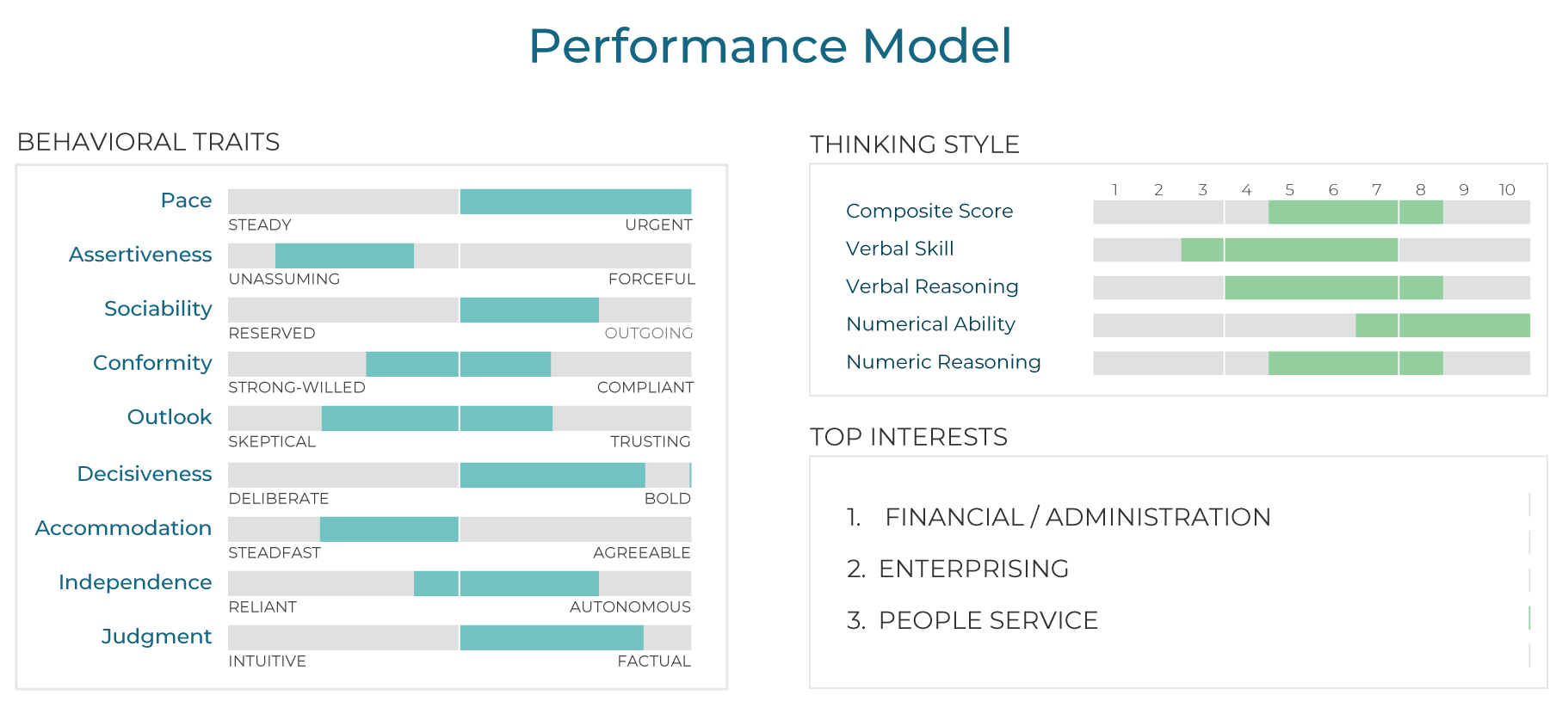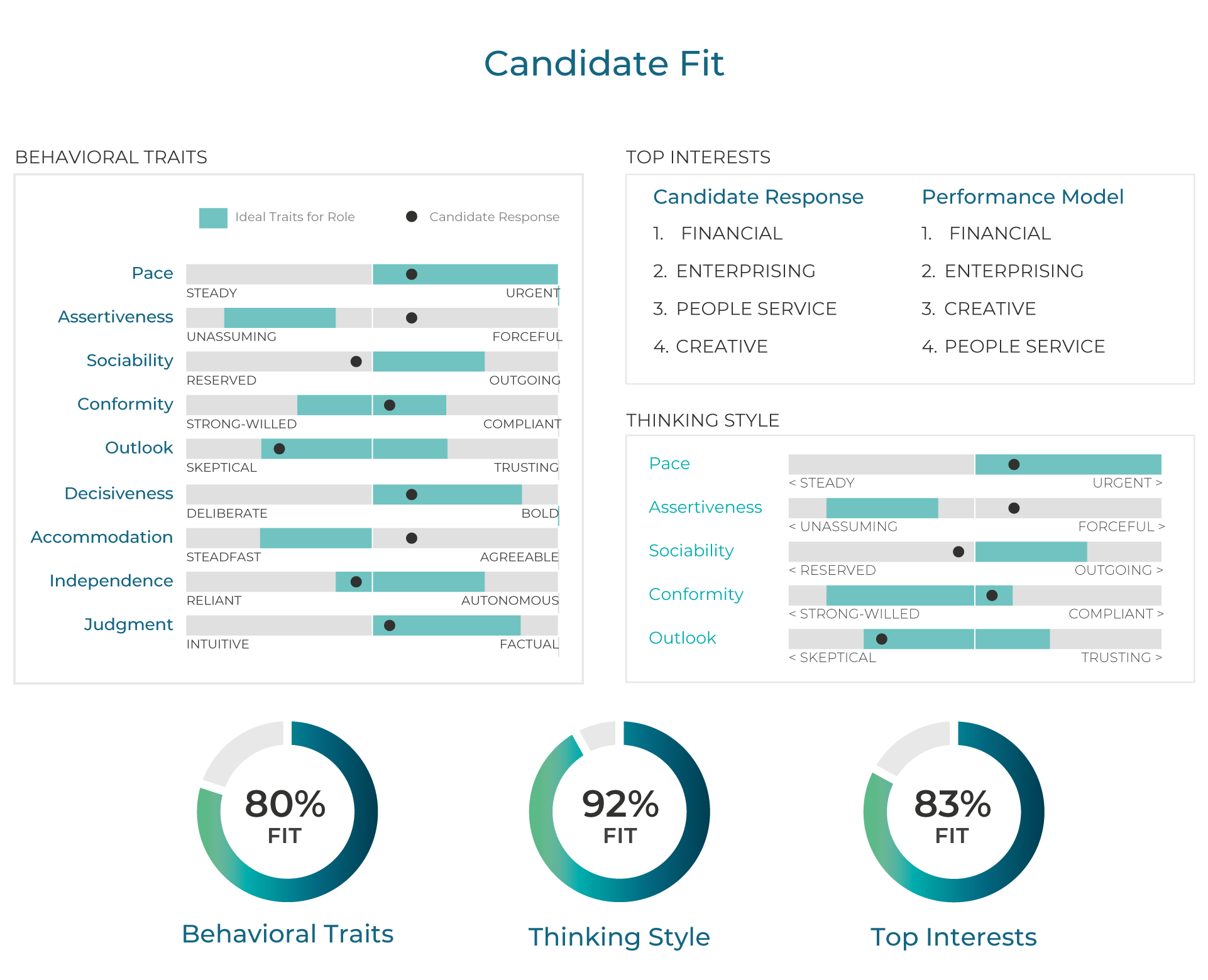
It’s hard enough to make the right hiring decision in the moment, but don’t forget that people change, evolve, and adapt. You need to hire for the long haul. However, finding candidates who will be great hires not just today, but also tomorrow, isn’t exactly easy.
So, how can you anticipate how someone will perform down the road? How can you be confident that you’re adding another player to the team who will turn out as great as your best performers?
Using a hiring assessment, like PXT Select®, can help you determine what success looks like in each role you hire for—we'll show you how.
How to Predict Future Job Success
To envision the qualities of a successful new hire, it helps to take a closer look at your current top performers to gauge their strengths, cognitive abilities, and behavioral traits. Identifying top performers is easy; the challenge is figuring out their recipe for success so you can find new team members who bring similar ingredients.
The process is simple yet effective. First, analyze the specific role you're hiring for. Then, determine what it takes to succeed in that role—not only considering experience or educational background but personality characteristics too. That way, you’ll have a benchmark persona to measure your candidates against. Using a Job Fit assessment, measure each candidate against the attributes identified in your performance model.

So, how can you start implementing performance models into your hiring and selection process? Use a Job Fit assessment like PXT Select.
How to Create a Performance Model
To select the best candidates for the job, you need a recipe for success. PXT Select’s performance model can be that recipe. The performance model outlines the "ingredients" or cognitive abilities, behavioral traits, and interests that contribute to success.
To create a performance model entirely from your own specific employee data, you’ll need data from a significant sample of employees in that position. If, for example, you have at least 30 IT security people on staff, you’ve got what’s needed to build a performance model for an IT Security role. If you don't have that information, PXT Select’s performance model library has models for many roles and can help you create customized models if necessary.
In the example below, the model shows the various Thinking Style attributes, Behavioral Traits, and Top Interests that fit best with the sample job role. Note the shaded areas—they represent the performance model's suggested range on any given trait. The goal is to find candidates whose traits fall within these defined ranges.

How to Assess New Candidates
The next step is to assess job candidates to see how well they fit into the performance model and how they compare with other candidates.
In the PXT Select solution, candidates take a computer-adaptive assessment. The aim is to quickly and accurately narrow down where the candidate fits in a particular measure. The candidate is presented with a moderately difficult question—a correct answer leads to a more difficult follow-up question, while an incorrect answer triggers an easier question. That’s the adaptive part, and the process continues until the algorithm is confident it has a good score for each attribute.
How to Identify Job Fit
So, what can you do with all the information in the performance model? The possibilities are powerful.

Second, the solution suggests specific interview questions based on the candidate’s assessment—and what to listen for in the answers. You can zero in on challenge areas and learn more about certain behaviors, abilities, or interests. And because the solution is so data-focused, the process helps hiring managers steer clear of their own personal biases.
Third, you can run a multiple candidates report and check how different applicants might fit the same role, helping you narrow down and focus your interview process on those with a high Job Fit (see the example below).

Fourth, you can run a multiple positions report. This report helps you see how a candidate may fit into a different role and performance model. After all, you may have found an exceptional candidate overall, but the job they applied for isn’t a great fit. This information helps your hiring team objectively analyze which traits stand out with each candidate.
To learn more about scaling performance in your organization, download our new eBook, Hiring Successfully For Dummies,PXT Select Special Edition. It’s your guide to mastering the art of Job Fit, helping you make data-driven hiring decisions that drive results.
Did You like This Content?
Join our newsletter to get insights,
updates and more!

Found this post useful? Share it.